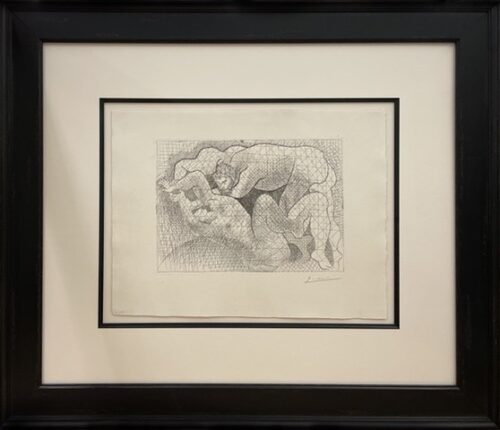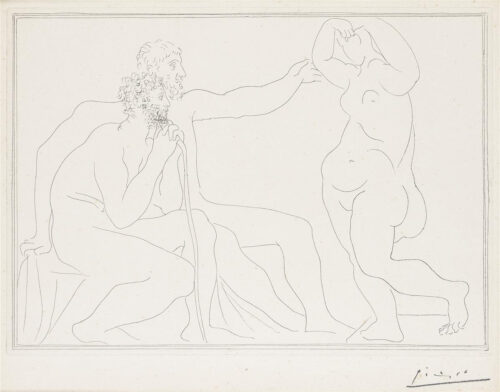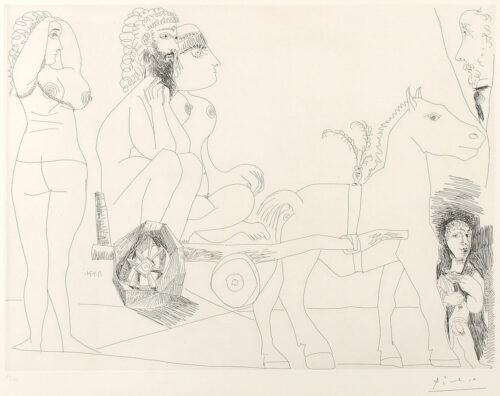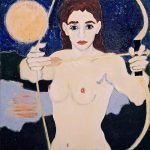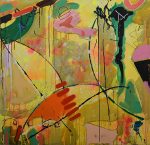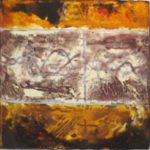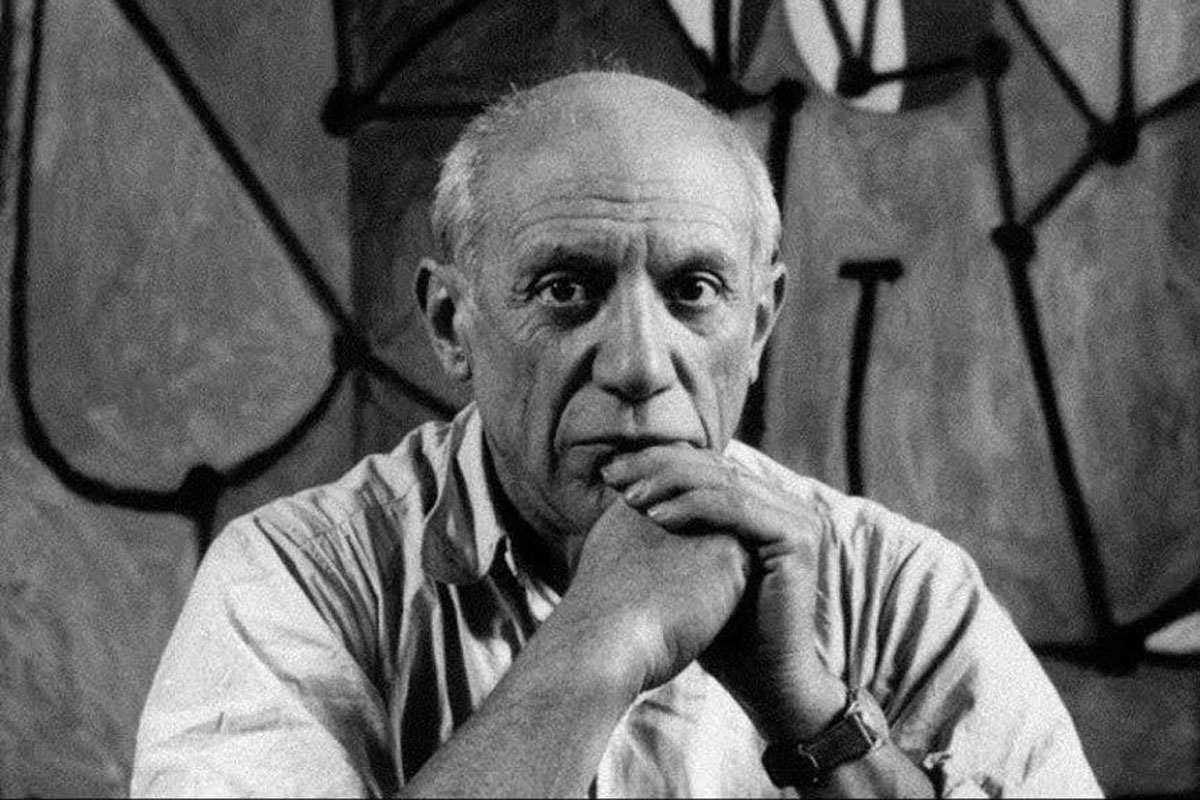
Pablo Picasso was born in Malaga, Spain on October 25, 1881. By the age of 15, under the tutelage of his father, he was already technically skilled in drawing and painting. In 1900, the young Spaniard moved to Paris and entrenched himself in an emerging generation of avant-garde painters, writers, and poets. Picasso’s highly original style continuously evolved throughout his long career, expanding the definition of what art could be. In addition to painting, he would explore sculpture, ceramics and other art forms, and became one of the most influential artist of the 20th century.
Paintings from Picasso’s “blue period” (1901-1904) depict forlorn people painted in shades of blue, evoking feelings of sadness and alienation. After his move to Paris in 1904, Picasso’s “rose period” paintings took on a warmer more optimistic mood. In 1907 he and French painter, George Braque, pioneered “cubism”.
By 1912 Picasso was incorporating newspaper print, postage stamps and other materials into his paintings. This style is called “collage”. By the late 1920s he turned toward a flat, cubist-related style. During the 1930s his paintings became militant and political. Guernica (1937), a masterpiece from this period depicts the terror of the bombing of the town of Guernica during the Spanish civil war.
Throughout his career, Picasso explored and excelled in various methods of printmaking – etching, lithography, linocut; each medium being pushed well beyond it’s accepted limitations by his unfettered imagination. In 1930, Picasso was commissioned to produce a suite of 100 etchings by famed Parisian dealer, Ambroise Vollard. The suite was finally completed and printed in 1939, but due to Vollard’s death and WWII, the suite wasn’t available until the 1950’s. Today, examples from Suite Vollard are considered among his most important graphic works and are included in numerous museum collections worldwide.
Following World War II, Picasso’s work became less political and more aesthetic. He spent the remaining years of his life in an exploration various historical styles of art, making several reproductions of the work of earlier artists. It’s said that throughout his life, Picasso burned with an existential anguish, accounting for his prolific and prodigious output of work, but which also cost him his personal relationships with wives, lovers, and family.
Picasso died on April 8, 1973 at his home, Notre-Dame-de-Vie in Mougin, France. He was buried on April 10 at his castle Vauvenagues, 170 kilometers from Mougin.


